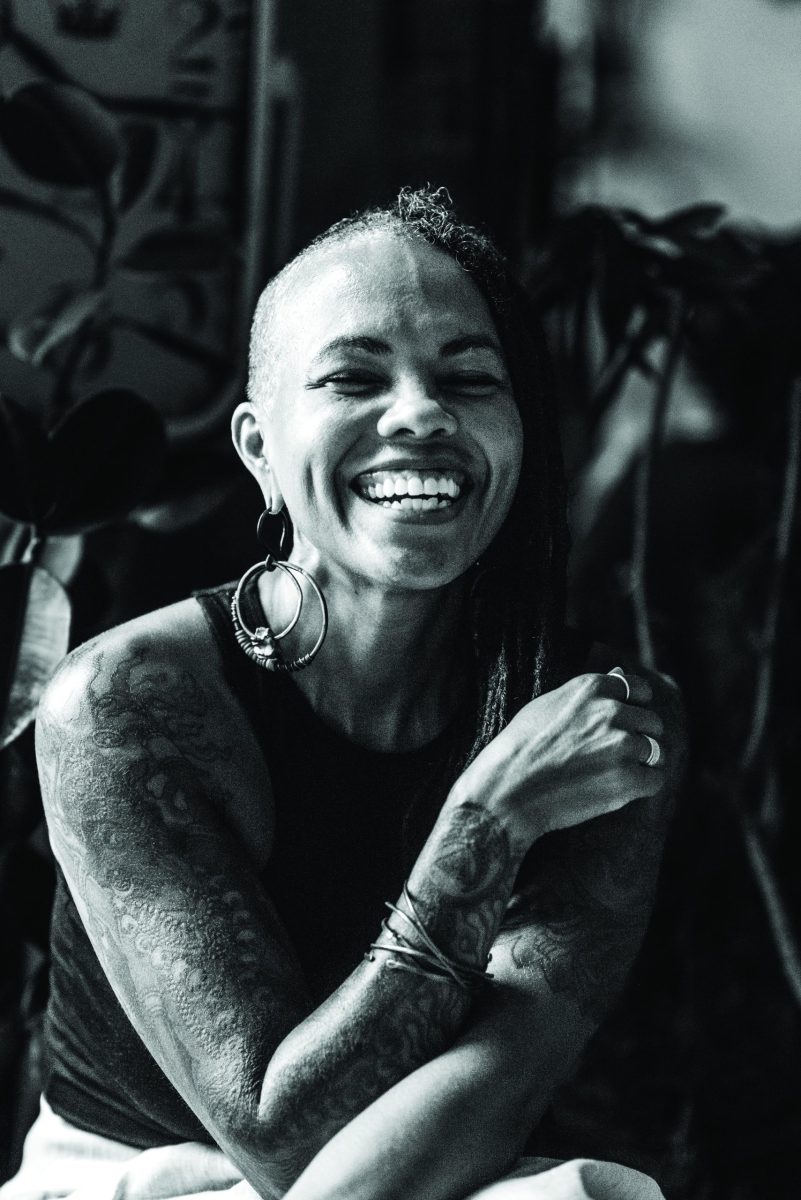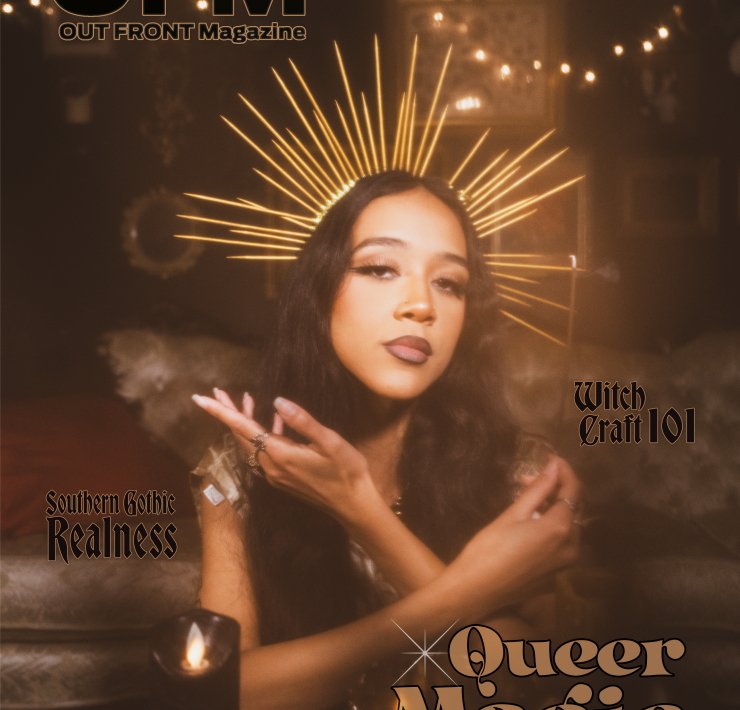Urban Sanctuary: Dismantling Racism with Movement in Five Points

The process of anti-racism has to start, not in the mind, but in the body. At least, that’s how Ali Duncan and Dameda JoLynn Finney see it. Ali started Urban Sanctuary six years ago, and now Duncan and Finney work together to marry the seemingly disparate concepts of wellness and anti-racism. Urban Sanctuary was created with the intention to help change the ways in which Black and Brown people are underrepresented in yoga spaces, and now, the pair have used their space to spread their particular ideas about anti-racism in the community.
OFM got the opportunity to speak to Duncan and Finney about their work and how anti-racism finds a place in the practice of yoga.
How did Urban Sanctuary start?
Ali Duncan: I opened it six years ago; this will be my sixth year. And it was focused to support the BIPOC community and the LGBTQIA community, so a safe space for them to be on their mats. We offer special classes for free for the BIPOC community and for the LGBTQIA community. And we’re just looking to continue to expand, and to do what we already do, and to reach more people. So that’s Urban Sanctuary.
And how did you get to that? What was your background before that?
AD: I was a police officer for 10 years. And I went to India and studied yoga, and then I came back. I was born and raised in Fort Collins and practiced yoga (there), and I was the only Black person on my mat. And then I quit the PD and I came to Denver, and I thought it would be different, and it was not. And my oldest daughter’s queer, so her and I talked, and we got together, and Urban Sanctuary was created. And we built it out. So she felt included being a Black, queer woman. And yeah, that’s how it all started.
Tell me a little bit about your anti-racism work and how that connects to Urban Sanctuary.
Dameda JoLynn Finney: I’ve been working inside of anti-racism work for, oh, my whole life really, but coming to understand what that meant in the last probably three or four years. In the spaces that I was holding, what I was noticing is that a lot of the times what white-bodied people wanted to do when we’re talking about anti-racism work is to get into the intellectual mind and try to think their way through situations, in other words, really thinking their way through the discomfort that was coming up in their body around the topic of racism, and any systems of oppression, but specifically racism.
And so, when I met Ali and really (started) getting to be a part of her community and understanding what she offers energetically through wellness, it felt like it was just a perfect relationship. In or- der to really do this anti-racism work, it is important that we get into the body. We store our trauma in our nervous system. And so by partnering with Urban Sanctuary, it just made the most sense to really get into the core of the work that we need to do in order to dismantle racism.
AD: When we talk about yoga and practicing yoga, you have to be inclusive on all levels. So even though we’re on the mat, we’re flowing; we’re moving, just understanding that that practice does not come from white bodies. It actually comes from Africa, then to India, and then it was westernized.
For everyday yoga, too, there’s micro/macro aggressions. I think they’re all (things) that people do, and they don’t even know that they’re doing it when they roll their mat out next to someone who has a different skin color. So it’s just allowing those people to be really mindful about what’s going on in the mind, as they are in a space where we all are one. So it’s just allowing the white-bodied humans to check in with themselves and see how they show up and start to make those shifts.
DJF: Walking into a studio where there’s a Black-bodied teacher in the room and a white body walks in the space, it’s a different way to be because we’re typically walking into yoga spaces where you typically see a white-bodied teacher at the front of the room. And so it feels like the norm. And I think that’s one of the things that I love about that, too, is white-bodied people getting to have that experience of walking in and seeing that there is a Black-bodied teacher, and what that really feels like and what is going on in their bodies during that class, the thoughts that they’re having around being taught by someone that looks different. And that’s our norm as Black and Brown bodies is that we’re used to walking into the room and seeing somebody that looks different than us. So it reverses the role. And we hold the space for that, which is really beautiful.
So where do you take this anti-racism work? Do you present your work elsewhere?
DJF: Really anywhere. I’ve done it in the corporate spaces, yoga spaces, one-on-one, just with individuals wanting to really expand their knowledge inside of anti-racism work and understand how it impacts them and how they, as white bodies, have been complicit in the white supremacist system. So anywhere and everywhere, please, and thank you.
One thing I found very interesting in your materials here is you are differentiating between the idea of DEI (diversity, equity, and inclusion) and anti-racism. Can you talk about that difference and why that’s important?
DJF: DEI has become a buzzword. And a lot of corporations use diversity, equity, and inclusion work to simply check a box so that they can say, “Yes, we have a committee that does DEI. Yes, we are proponents of DEI work.” But (they’re) not really understanding what that means on the surface. Yes, you can have your policies and procedures and your systems in place. But do you really understand why those procedures, policies, and systems are in place?
And so the embodied antiracism approach, which is really more internal, so you’re doing the work individually on an individual level. You really get to understand, why do I need to start putting these policies, procedures, and practices into place? And so there’s a deep understanding of the purpose of why those even need to be looked at in a different way. And so that’s really the difference.
One I feel is more a face for a checking the box sort of thing, and then the embodied anti-racism is really getting into the heart of the work. And so you work with the individual, both on the individual level, and then also as an individual within those systems. And (you) start seeing the racial disparities, you see the discrimination, you start seeing all of the things within the systems when you start doing this work on your own.
Click here to learn more about Urban Sanctuary and don’t forget to follow them on social media.

What's Your Reaction?
Julie River is a Denver transplant originally from Warwick, Rhode Island. She's an out and proud transgender lesbian. She's a freelance writer, copy editor, and associate editor for OUT FRONT. She's a long-time slam poet who has been on 10 different slam poetry slam teams, including three times as a member of the Denver Mercury Cafe slam team.










